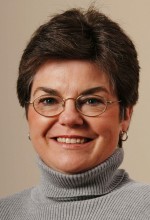In the midst of Lent, an event occurred that touched me very much, but at the time I wasn’t sure exactly why.
A Jesuit priest named Father Frans van der Lugt was shot dead in Homs, Syria. I think it was the picture that accompanied the stories of his murder that initially tugged at me. There he is, looking good in a black leather jacket, fine bone structure on his handsome 75-year-old face, an intelligent, thoughtful face framed by wire-rim spectacles.
He has an arm outstretched and a hand open in front of him, as if in fine Jesuit fashion he is patiently and gently exploring some truth with someone.
He is surrounded by Middle Eastern people. Were they Christians or Muslims? I don’t know, and as I learned more about him, I realized it did not matter. Father van der Lugt was a man engaged in interreligious dialogue. He was a man with an open heart, a lover of humanity, and a lover of the Syrian people with whom he had spent his life for nearly 50 years.
After the news reports, I immediately made a copy of his picture and tacked it to my bulletin board, where I put special things, like family photos, crucifixes, invitations, reminders to pray. Father van der Lugt, this newest martyr, became for me a reminder to pray.
Then I began to learn more about him. It seems that a young Syrian Jesuit from the Middle East province, Father Tony Homsy, is studying at Creighton University in Omaha, Nebraska, where I live. Homsy is 28 and writes for The Jesuit Post, an edgy and youthful website.
Homsy is a graduate of the University of Aleppo in Syria. He loves photography and has posted a tribute, including photos, of Father van der Lugt on The Jesuit Post.
Father van der Lugt was Dutch, and Homsy knew him well. He went on retreats with him where the Jesuit would spend an entire night hearing confessions, then rise early for meditation. Father van der Lugt ran Al-Ard, an oasis for the disabled, a retreat house, a house of peace, with a winery, just outside the city of Homs. He was devoted to the people of Syria, Muslim and Christian. He had a willingness to stay in the dangerous and besieged city of Homs because he wanted to stand with the Syrians and their suffering.
I suppose on some level, Father van der Lugt knew that he would most likely be killed for his devotion. He reminds me of Jesus, who knew, as he turned toward Jerusalem on that final journey, that death awaited him.
But with a quiet dignity, and without blaming others, Jesus, and Father van der Lugt, met martyrdom with peace. Only a believer can do this. It’s a question I ask myself: Could I have stayed? Would I remain faithful to God?
The horrors of Syria are often on our newscasts, but sometimes they don’t make it from the head to the heart. The problem is so enormous, so complex, the solutions so hard to decipher. The end is so far out of sight.
The only thing that makes sense makes no sense at all to the pragmatist. Father van der Lugt followed a crucified Christ on the way to Calvary, a Calvary lived out daily in the lives of the Syrian people.
PREVIOUS: Looking for light in the post-modern darkness
NEXT: Papal letter on water would be a great gift to the world




Share this story